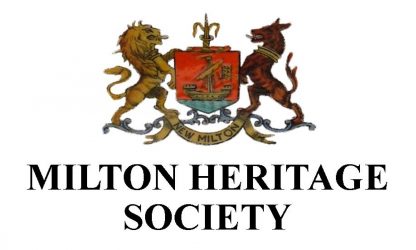Barton has developed rapidly over the last one hundred and twenty five years. In 1868 a new coastguard station was built to house seven men and a chief officer. This was needed as smuggling was still a problem in the area. In 1870 it was recorded that there were only 9 other cottages in Barton.

Great change came when the Barton Court estate was put up for sale on 11th of July 1894. Barton Court house was sold and became a hotel owned by Sir Robert Affleck and later run by Mrs White, who enlarged the main building by adding on another wing.

The land belonging to the Barton Court estate was also sold off. This covered an area from Naish in the west to Becton in the east and as far north as the Christchurch to Lymington Road. Land speculators and builders moved in. The area became popular with tourists as a result of the railway connections (since 1888) from London and Bournemouth. The Barton Court Hotel boasted a nine hole golf course which attracted the sporting fraternity to come to the area. Little remains now of the Barton Court Hotel which has slowly succumbed to cliff erosion. The remaining wing is now the Barton Court Studios where people can receive tuition in all aspects of music and singing.
Some large parcels of land were purchased and houses of considerable size were built. One that was constructed on Marine Drive started life as a school and ended up being used as a home for eastern European refugees. When it was a school it was called Hengistbury and run by a Mr Baldock M.A. who claimed the location was ‘recommended by doctors’. It started out as a boys school and then became a girls only establishment. Between the two World Wars it was a private hotel.

In WW2 it was requisitioned by the armed forces. Immediately post-war it became a retirement home for nurses. From 1954 to 1991 it was used by the British Council for Aid to Refugees as a home for displaced people from Eastern Europe. In 1966 the home was visited by the Aga Khan who was at that time commissioner for refugees. The building cost a huge amount of money to run and maintain. It became very difficult to modernise the premises and so it was sold off. The property was demolished and flats were built on the site in 1994.
One of the first of the large ‘new builds’ was Becton House. In about 1900, Mr Alexander Paris, a Southampton solicitor, bought a piece of land on the corner of Becton Lane and Barton Common. He also purchased Barton Common itself. Mr Paris built Becton House as a family home.

He tried to fence off Barton Common and had a very public altercation with the people of Milton and the Town Council who continued to use it as a Common. He ended up taking the people of Milton to the High Court in London where he lost his case. Sadly the son of Alexander Paris, Major Harold Paris MC* was killed in action in 1918. This had a major impact on Alexander’s health. He passed away in 1925. The common was sold to Lymington Borough Council. Becton House became a nursing home and is still in use by the NHS.

Another large building and grounds still in existence is Furze Close. This was built in 1909 off of Becton Lane. It was used as a preparatory school for boys. The school was run by Mr Stubbs until World War Two when it was requisitioned. After the war a headmaster, Mr Cox brought Durlston Court School from Swanage to Becton. Durlston Court has been in residence ever since. The grounds have shrunk considerably from 1909 but the main school building, despite a disastrous fire in 1947, is still going strong.

An example of how Barton has typically undergone change over the last century can be seen in a development off of Barton Court Avenue. ‘White Knights’ was a large private residence set in extensive grounds. On the 10th of May 1934 the house and grounds were sold at auction. Later 36 houses were built on the site. This has been fairly typical of development in the area where a substantial property and grounds have been turned into a small estate.
Today, not everyone is in favour of redevelopment, especially as some of the older house are still of some architectural merit. This was also the case in the early days of Barton’s growth. In 1908 the travel writer D.H. Moutray Read wrote about a journey he undertook along the south coast. He has this to say about Barton; ‘This coastland has been invaded by the speculative builder. Scattered about everywhere are painfully new villas and “desirable marine residences”. Those that are not TO BE SOLD invariably are TO LET! White boards on low posts announce the existence of Avenues or Parks. Two villas make an Avenue and the park probably consists of a double row of seedlings down a loosely gravelled track. Hotels seem to flourish and golf links abound. In the summer holidays visitors fill the little villas and cottages; boys and girls, mostly hatless, career round on cycles’. Perhaps some things don’t change.
